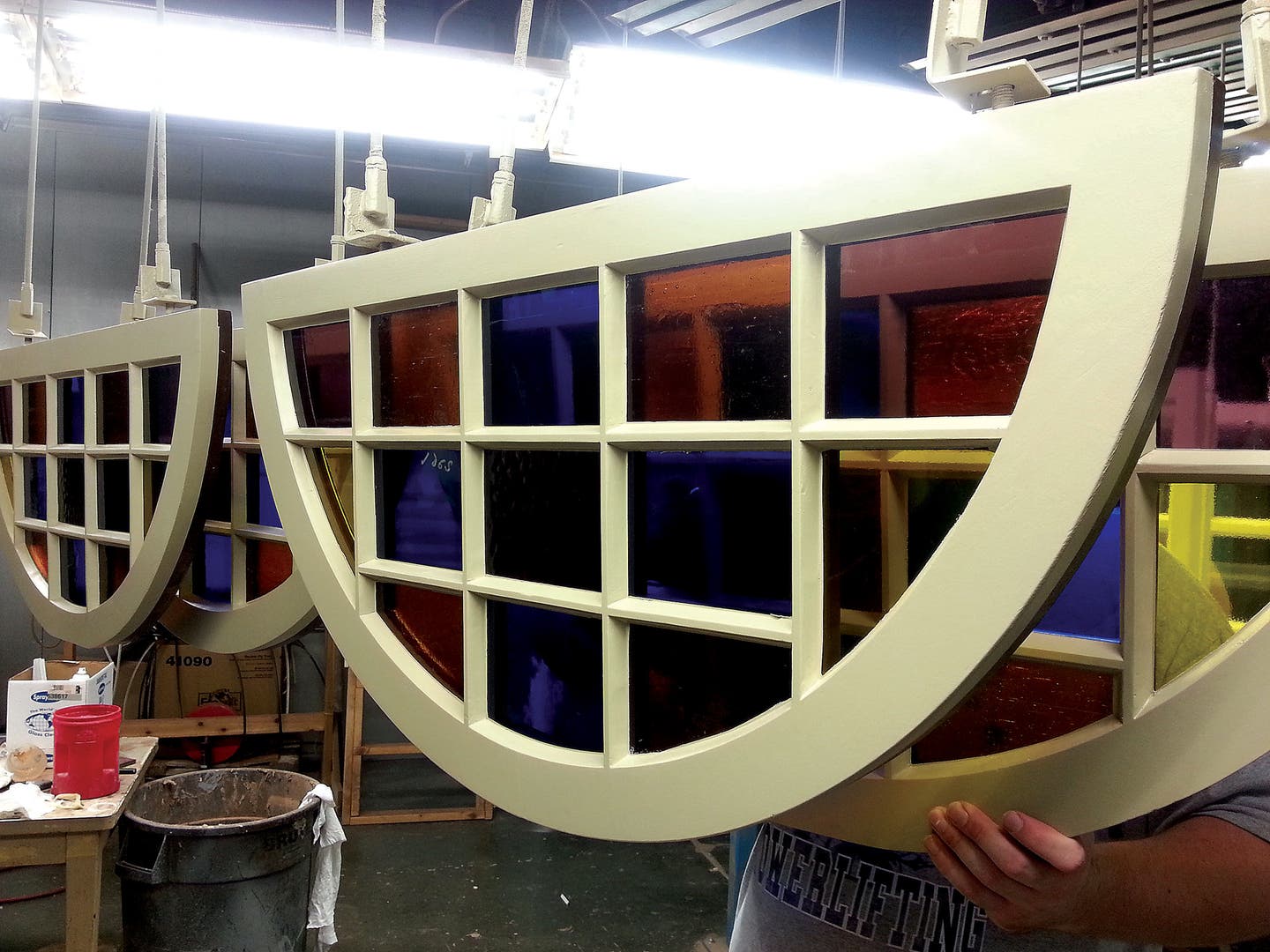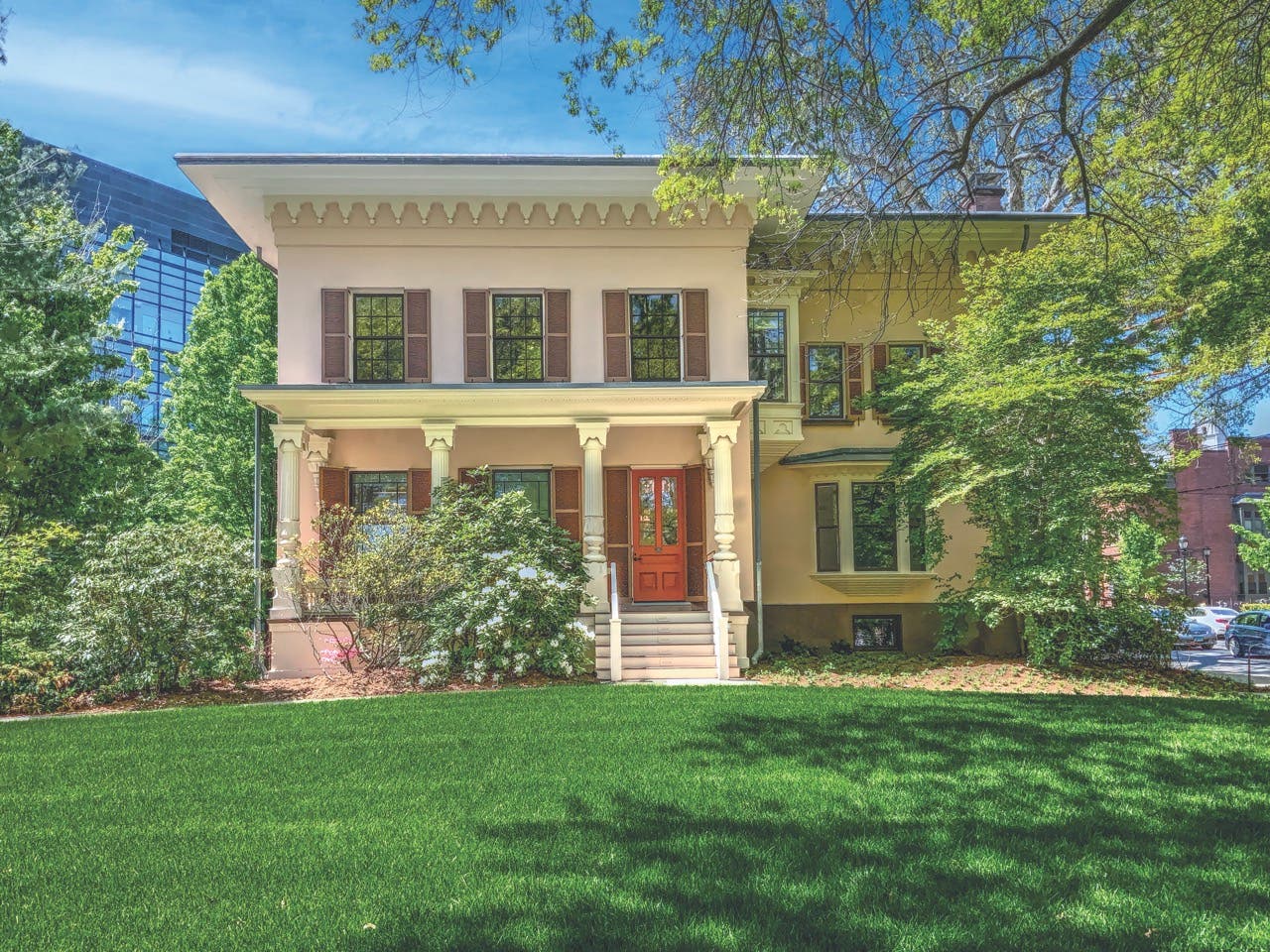
Windows & Doors
Replicating Wood Windows for Historic Buildings
Windows animate the exterior of a building in the same way that the eyes animate a face. Seemingly small changes in window configuration (such as a thicker glazing bar or a different brickmold) can have amazingly large—and adverse—effects on the overall appearance of a building. That's why most historic district design guidelines, for example, pay special attention to window issues. It's all too easy for fast-talking window contractors to sell totally inappropriate replacement windows to novice property owners—usually touting "energy savings."
One Option: Repair the Existing Windows
One reason that historic district commissions often urge building owners to restore original windows rather than replace them is because with restoration there's less chance of changing a building's appearance. Frequently, a window contractor will assure the customer that "you won't be able to tell the difference," but the final installed product is noticeably off. The online list of companies doing window restoration and repair, above, gives a good sampling of restoration services currently available.
If it's determined that total window replacement is necessary, the specifier should proceed with great care. The following is a partial list of factors to consider:
Window Material Options
Property owners have many material options for replacement windows, including wood, steel, vinyl, and aluminum.
Wood
Historic preservation authorities usually recommend replacing wood windows with wood for a number of reasons: (a) It's more likely the replacement will be a close copy of the original; (b) Wood offers great flexibility in detail and design; (c) Wood adapts readily to custom replication; (d) Partial replacements are more easily done in wood (avoiding complete tear-outs); (e) Wood units can be maintained and repaired indefinitely. A major drawback of wood replacement windows occurs when you want to use insulated glass in replicas of Early American windows that were lightly made with thin muntins. Insulated glass units usually require a muntin as wide as 1 in. or more to adequately cover the insulating glass spacer. This wide muntin detracts from the Early American look.
Aluminum
Aluminum replacement windows are available in a wide range of price and product quality. At the high end, custom aluminum windows have been used in many historic restoration projects to the satisfaction of design review boards. At the low end, stock aluminum windows depend on sheet aluminum panning to bridge over size variations. Often, this panning bears little resemblance to the original wood frame and brickmold—with unfortunate visual consequences.
Vinyl
Vinyl windows are strong, lightweight, rot resistant and never in need of painting. And vinyl units are available for no tear-out applications, meaning they can be installed in existing frames after the stops have been removed. And vinyl windows are fairly energy efficient.
However, a number of factors make vinyl of limited value for landmark applications. Vinyl windows rarely match the visual characteristics of historic windows; colors are limited; units are difficult—or impossible—to repair and long-term durability is a major question mark.
Steel
Steel windows are found in historic buildings beginning around 1900. However, steel replacement windows are only appropriate where the originals were steel. A number of metal window companies can supply steel windows that are very close replicas to historic originals. In a few instances, aluminum windows are now being used to replicate steel windows; it's easier to duplicate a steel window in aluminum than replicating a wood window.
Inserts Versus Tear-Outs
In many situations, the wood frames are in better shape than the sash. In these cases, replacement window inserts should be considered rather than full tear-out of both sash and frame.
With window inserts, just the old sash and stops are removed, and new sash installed. Insert systems give property owners the option of getting insulated glass and tilt-turn operation for easy cleaning. Insert systems are also more economical than full window replacements and retain more of the building's original fabric (a bonus always appreciated by historic district commissions).
Pay Attention to Dimensions & Proportions
To avoid drastically changing a building's look, the replica window should match the original in all dimensions, profiles and proportions; for example, the size and shape of window panes and muntins should match. If the window frame is also being replaced—a tear-out job—dimensions and profiles of the frame and brickmold should be identical. Exact replicas of wood windows are available as custom jobs; some suppliers also offer semi-custom windows that achieve a good balance between cost and historical accuracy. With semi-custom windows, the basic design is fixed, but size and proportion can be tailored to fit existing openings.
Glazing Bars
The glazing bars (muntins) are critical to a window's look. Originally, glazing bars were structural and actually held each pane of glass. In today's replacement windows, you can get glazing bars that are either structural (true divided-light) or non-structural (applied muntins). When non-structural, the glazing bars are just laid against a large single pane of glass—sometimes on the outside, sometimes on the inside and sometimes between the two panes of an insulated glass unit. Whatever the configuration, an applied muntin system leaves one or both sides of the window without the depth and shadow lines that a structural muntin system provides. As a result, the window's visual characteristics are considerably altered.
Storm Windows Versus Insulated Glass
As noted above, using insulated glass units usually requires muntins at least 1 in. wide. (A few custom suppliers can provide insulated glass in true divided lights, with muntins as narrow as 7/8 in.) If narrow muntins are required and energy efficiency is an issue, then storm windows—either outside mounted or inside mounted—should be considered. The list accompanying this report provides a good sampling of suppliers of storm windows for landmark buildings.
Stock Windows Versus Custom Windows
When the exacting standards of a landmark review board must be met, often the only course is a custom replica window. While this is a higher-cost option, the result is (or should be) an exact historical duplicate. A middle course is the semi-custom historic lines of some manufacturers, when the standard design meets the visual requirements and the units can be manufactured to meet specific size and proportion requirements. The list accompanying this report contains both types of wood window suppliers.
Balance Systems
Most old double-hung windows have weight-and-chain balance systems. These are not used in most stock windows today because of cost and potential drafts from the weight pockets. Spring balance and block-and-tackle systems have largely replaced the weight-and-chain unit. However, some of these systems are not easily repaired once something breaks.
By contrast, the simple sash-weight system is durable, reliable and easily repaired; some weight-and-pulley systems over 100 years old are still giving good service. It's noteworthy that some high-end custom window lines boast of having weight-and-chain balance systems. The accompanying list contains suppliers of traditional window hardware, including sash weights, pulleys and sash chain.
The Crucial Question
Before deciding on the spec for a replacement window, ask this question: "Will the replacement window last as long as the original did?" If the answer is no, the replacement may not be as earth friendly, historically appropriate and economical as more traditional solutions—and you should re-think your options.








